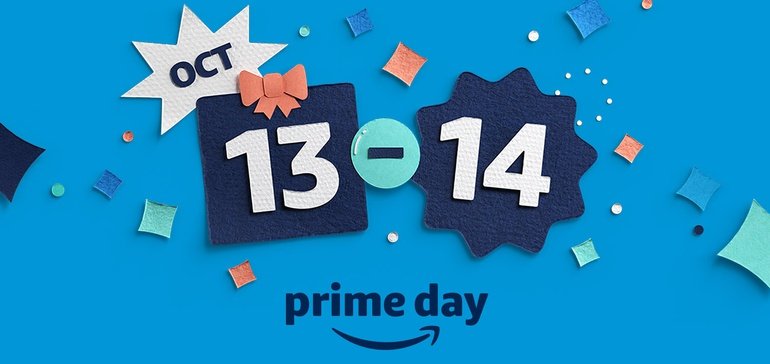5 Predictions for the Christmas Shopping Period
In an unpredictable year it's hard to see what's on the immediate horizon — particularly when it comes to consumer spending habits. 2020 has been full of wild cards. In years past, forecasting for the last

In an unpredictable year it’s hard to see what’s on the immediate horizon — particularly when it comes to consumer spending habits.
2020 has been full of wild cards. In years past, forecasting for the last quarter of the season seemed, comparatively, like a much more straightforward effort. But, in a year when retailers have been trying to serve their customers, keep employees safe and still have products shipped out on time in the middle of a pandemic, it’s hard to see what’s on the immediate horizon, especially with consumer spending habits.
“We might want to predict right now. The only thing we can guarantee is that we would be wrong,” said Howard Meitiner, managing director at Carl Marks Advisors and former president and CEO of Sephora USA.
Holiday sales forecasts have been cautious, too: ICSC projects a 1.9% rise in spending, while CBRE hovered in the same space, predicting less than 2% growth. Deloitte went a bit further, releasing a “K-shaped” approach to the season. One arm of that scenario keeps growth at 0% to 1%, while another, more optimistic version has a rise of up to 3.5% if several things fall into place, including an “effective federal pandemic relief bill with an unemployment insurance benefit supplement, and the creation of an effective vaccine.”
Meitiner puts it simply: “If sales are flat overall — that would be success.”
While the pandemic, an upcoming election and a teetering economic situation has thrown many variables at forecasting for the season, companies are thoughtfully delivering solutions to meet consumers where they are. Retailers have made an effort to elongate the season to keep customers safe and to respond swiftly to orders, BOPIS has become commonplace and e-commerce is primed to be a vital shopping channel.
In the middle of an unprecedented year for retail, here are five predictions for the holiday:
1. A longer holiday season
Black Friday has traditionally been the kickoff of the holiday shopping season. However, 2020 has upended most strategic plans, including the start of when retailers generally prompt holiday spending.
Consulting firm AlixPartners added the month of October for the first time to its holiday forecasting, stating that the typical seasonal definition was “meaningless” this year. Instead, the company’s research stated that 49% of consumers are planning to start their holiday shopping by Halloween or earlier.
Then Amazon effectively drew a boundary around the definition of the season with the launch of its Prime Day sales event Oct. 13 and 14. When the e-commerce giant postponed the event, which is typically held in July, it lead to much speculation on what its game plan would be in regards to the holidays. But, when a new date was announced, other retailers, including Walmart, Target, Best Buy, Kohl’s and J.C. Penney, launched with deals of their own on the same days, definitively pulling back the start of the holiday both to remain competitive and to spread out the logistics demand for the period.
2. E-commerce is king
The spring of 2020 was a gut punch for the retail industry. Nonessential retailers temporarily closed their physical doors to reduce the spread of COVID-19. While brick-and-mortar sales were mostly put on pause, retailers looked to their online channels to keep products moving. It resulted in both Q1 and Q2 showing a terrific boost to e-commerce for many stores, including Gamestop (up 800%), Macy’s (up 53%), Kohl’s (up nearly 60%) and Ulta (up more than 200%).
Continued uncertainty with COVID-19 will dramatically impact shopping patterns this holiday season. A recent report by PwC stated that a majority of consumers (55%) said the virus is their top concern, with 65% stating they are concerned about catching the virus when holiday shopping.
This makes online purchasing an attractive alternative. The International Council of Shopping Centers in a recent report estimated e-commerce sales will jump 25% this year. The figure is notable, as U.S. e-commerce sales in 2019 grew around 13% to $137.6 billion, in a season that was marked by a robust e-commerce channel.
3. Store fulfillment takes center stage
In the run up to the holidays, companies have been taking on additional staff, which is typical for the fourth quarter. However, this year there is greater emphasis on warehouse and omnichannel operations, as many retailers make moves to leverage their stores as a means to fulfill orders.
In September, Target announced it would keep hiring “on par” with last year’s 130,000 holiday workers. However, the big-box retailer is using its workforce in a different way, specifically as a means to support omnichannel services, which grew a dramatic 273% in its second quarter. As part of this effort, Target announced plans to double the number of employees focused on Drive Up and Order Pick Up operations.
Walmart has a similar strategy, as it anticipates hiring 20,000 seasonal employees, specifically for its e-commerce fulfillment efforts as it prepares for a spike in online shopping. Walmart-owned Sam’s Club will be hiring far less — around 2,000 workers — but for a similar purpose, to fulfill supply chain operations. The club store also introduced a ship-from-store program, a first for the retailer.
All this highlights what Meitiner calls the “four A’s” of service — anytime, anyplace, anyway, anywhere — as retailers attempt to leverage their operations to quickly fill orders at various touchpoints. The “winners are going to be those retailers who are going to accommodate the way the consumer wants to be accommodated,” he said.
4. Shipping could be an issue
Package delivery via mail over the past few months has been fraught. The summer of 2020 brought an increased concern over the postal system, as consumers started realizing their e-commerce orders were taking much longer than usual, and anxiety increased around changing policies at the United States Postal Service, especially around the impending election.
Back in August, UPS announced that it would increase surcharges for the holiday season as a means to counterbalance the sheer volume in e-commerce growth expected from November to mid-January. FedEx followed by doing something similar, stating that some surcharges were to begin as early as Oct. 5. The delivery company explained to analysts during the summer that the peak surcharges are a new normal, and that the pandemic dramatically increased parcel volume away from business-to-business operations and to more costly business-to-consumer deliveries.
That backdrop leads to a precarious shipping setup for the fourth quarter. Though retailers are heavily pushing omnichannel this season, the volume of mail due to an uptick in e-commerce may lead to delays in delivery. “It’s going to be slow, it’s going to take longer to get there, because demand is going to balloon,” said Ray Wimer, professor of retail practice at Syracuse University.
A recent forecast by Salesforce predicts the number of packages shipped via traditional mail providers will exceed capacity by 5% between the week before Cyber Week going through Boxing Day (Dec. 26). “That’s potentially 700 million gifts that are at risk of not arriving in time for the holidays,” according to Salesforce.
A longer term concern, though, is the cost. “What’s that going to do to retailers’ gross margins?” asked Wimer. “You now have an extra surcharge in the heavy months now from the UPSs and the FedExs. Are you going to all of a sudden pass that off? Because we do know from past that customers abandon when they see they’re being charged the shipping costs. So I would think that retailer is going to take on that cost, which further lowers margin.”
5. The consolidation of store visits
In-store holiday traffic is expected to drop up to 25% this year due to coronavirus-related concerns, even as retailers put precautionary measures in place like social distancing, increased cleaning regiments and limiting the number of people in stores.
“I don’t think people are going to just go off to stores without planning and thinking,” said Meitiner. That means, he said, shoppers will have fewer store visits, but when they do go into a physical space they will purchase more. It means a “much more purposeful visit.”
That puts big-box retailers like Target, Walmart and Costco at an advantage, where consumers can buy from multiple categories on their lists. It also means that specialty retailers may get edged out as consumers look for one-stop shopping solutions.
Wimer said that even prior to the pandemic store traffic was dropping, even as comps sales and average transaction numbers were still doing very well. “Consumers were being more precise in when they were visiting a store — that they were going in to buy something. There seemed to be, looking back in 2019, a little more hesitancy to browse just to browse. I think that, if anything, has increased.”
Via RetailWire
 English
English






